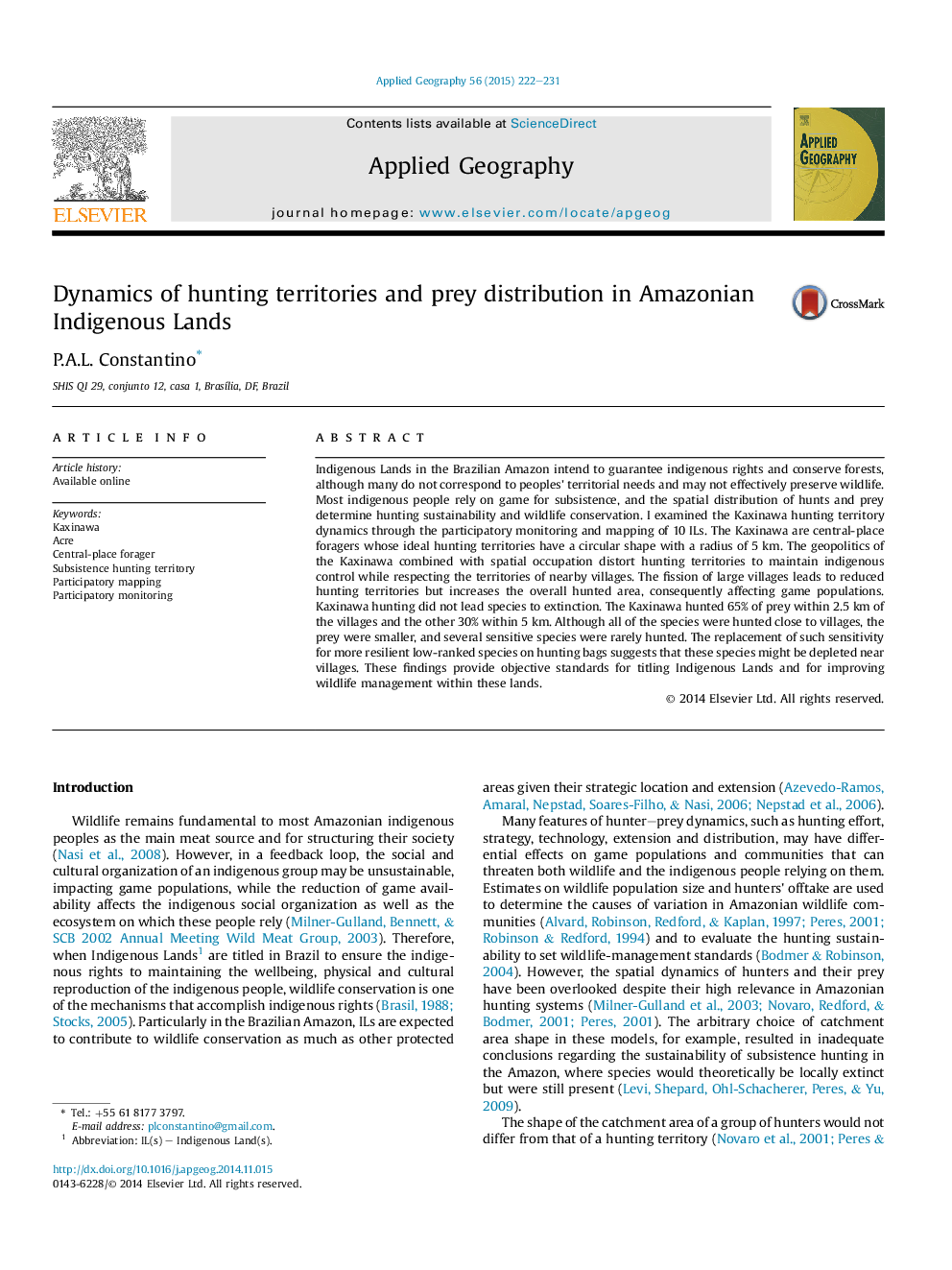| کد مقاله | کد نشریه | سال انتشار | مقاله انگلیسی | نسخه تمام متن |
|---|---|---|---|---|
| 6538661 | 158703 | 2015 | 10 صفحه PDF | دانلود رایگان |
عنوان انگلیسی مقاله ISI
Dynamics of hunting territories and prey distribution in Amazonian Indigenous Lands
ترجمه فارسی عنوان
دینامیک سرزمین های شکار و توزیع شکار در مناطق بومی آمازون
دانلود مقاله + سفارش ترجمه
دانلود مقاله ISI انگلیسی
رایگان برای ایرانیان
کلمات کلیدی
موضوعات مرتبط
علوم زیستی و بیوفناوری
علوم کشاورزی و بیولوژیک
جنگلداری
چکیده انگلیسی
Indigenous Lands in the Brazilian Amazon intend to guarantee indigenous rights and conserve forests, although many do not correspond to peoples' territorial needs and may not effectively preserve wildlife. Most indigenous people rely on game for subsistence, and the spatial distribution of hunts and prey determine hunting sustainability and wildlife conservation. I examined the Kaxinawa hunting territory dynamics through the participatory monitoring and mapping of 10 ILs. The Kaxinawa are central-place foragers whose ideal hunting territories have a circular shape with a radius of 5Â km. The geopolitics of the Kaxinawa combined with spatial occupation distort hunting territories to maintain indigenous control while respecting the territories of nearby villages. The fission of large villages leads to reduced hunting territories but increases the overall hunted area, consequently affecting game populations. Kaxinawa hunting did not lead species to extinction. The Kaxinawa hunted 65% of prey within 2.5Â km of the villages and the other 30% within 5Â km. Although all of the species were hunted close to villages, the prey were smaller, and several sensitive species were rarely hunted. The replacement of such sensitivity for more resilient low-ranked species on hunting bags suggests that these species might be depleted near villages. These findings provide objective standards for titling Indigenous Lands and for improving wildlife management within these lands.
ناشر
Database: Elsevier - ScienceDirect (ساینس دایرکت)
Journal: Applied Geography - Volume 56, January 2015, Pages 222-231
Journal: Applied Geography - Volume 56, January 2015, Pages 222-231
نویسندگان
Pedro de Araujo Lima Constantino,
